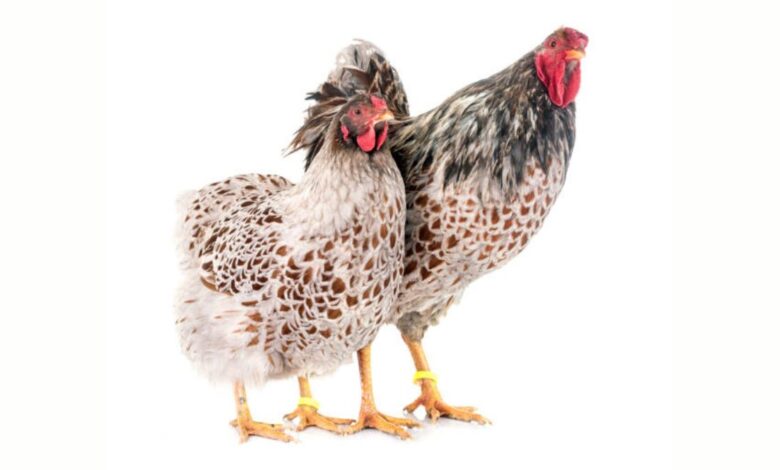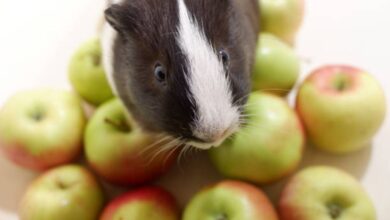Blue Laced Red Wyandotte care guide for backyard chicken keepers

If you’re looking to add a splash of color and charm to your backyard flock, the Blue Laced Red Wyandotte might just be the perfect fit for you. Known for their striking plumage and friendly personalities, these birds stand out as both eye-catching pets and reliable layers. Whether you’re a seasoned chicken keeper or new to the world of poultry, understanding how to care for this unique breed will help you nurture happy, healthy hens that thrive in your backyard. Let’s dive into everything you need to know about keeping Blue Laced Red Wyandottes!
The History and Characteristics of the Breed
The Blue Laced Red Wyandotte is a captivating breed with roots tracing back to the late 19th century in the United States. This stunning bird emerged from careful breeding, combining the beauty of laced feathers and rich red plumage.
Developed primarily for its dual-purpose capabilities, these chickens were valued for both meat and eggs. The blue-laced variety, with its unique feather patterns, quickly gained attention among poultry enthusiasts.
Their temperament is another highlight; they are known for being friendly and docile. This makes them an excellent choice for backyard keepers who want sociable birds.
Wyandottes also exhibit resilience to harsh weather conditions, thanks to their sturdy build and thick feathering. Their calm demeanor allows them to coexist peacefully with other breeds while adding charm to any flock’s dynamic.
Coop Requirements for Blue Laced Red Wyandottes
Creating a cozy coop for Blue Laced Red Wyandottes is essential for their well-being. These chickens thrive in a spacious environment, so aim for at least 4 square feet per bird inside the coop.
Ventilation is crucial. Fresh air keeps them comfortable and prevents respiratory issues. Ensure there are windows that can be opened or vents located high up to allow airflow while keeping drafts away.
Nesting boxes should be available to encourage natural laying behavior. One box for every three hens will suffice, filled with clean straw or wood shavings.
Don’t forget about security! Predators like raccoons and foxes can threaten your flock. A sturdy latch on doors and wire mesh around the run help keep these birds safe from harm.
Provide ample outdoor space where they can roam freely but ensure it’s fenced properly to prevent escapes.
Feeding and Nutrition for Optimal Health
Feeding your Blue Laced Red Wyandottes properly is crucial for their overall health. These birds thrive on a balanced diet that includes high-quality layer feed, which ensures they receive essential nutrients.
In addition to commercial feed, consider supplementing with fresh fruits and vegetables. Greens like kale and spinach are excellent choices. They not only provide vitamins but also keep your chickens engaged.
Don’t forget about grit! This small stone helps them digest food effectively. Providing access to clean water is equally important; hydration plays a key role in their well-being.
Occasionally, you can offer treats such as mealworms or scratch grains. Just be cautious not to overdo it; moderation is key for maintaining optimal weight and avoiding health issues.
Regularly assess their body condition to ensure they’re getting the right nutrition tailored to their needs at different life stages. Happy hens produce better eggs!
Egg Production and Brooding Behavior
Blue Laced Red Wyandottes are known for their impressive egg production. These striking hens typically lay around 200 to 250 medium-sized brown eggs per year. Their consistent laying makes them a favorite among backyard chicken keepers.
Their calm demeanor also shines during brooding season. Blue Laced Red Wyandottes can be excellent mothers, often displaying nurturing behavior toward their chicks. This breed tends to go broody more frequently than others, which means they’ll happily sit on eggs and care for hatchlings.
If you’re looking to expand your flock organically, these hens offer the perfect blend of beauty and productivity. Keep an eye on any potential signs of broodiness; once they show interest in nesting, it’s time to provide them with some fertile eggs if you want new chicks running around your yard soon!
Common Health Issues and How to Prevent Them
Blue Laced Red Wyandottes are generally hardy, but like all chickens, they can face health challenges. One common issue is respiratory infections, often caused by poor ventilation or overcrowding in the coop. Ensure your space has adequate airflow and don’t pack too many birds together.
Another concern is mites and lice. Regularly check for signs of infestation, such as feather loss or excessive scratching. Maintaining a clean environment will help prevent these pests from taking hold.
Also watch for signs of internal parasites, which can lead to lethargy and weight loss. A regular deworming schedule can keep your flock healthy.
Provide a balanced diet rich in vitamins and minerals to boost their immune systems. Healthy chickens are less susceptible to diseases and thrive better overall.
Tips for Handling and Bonding with Your Chickens
Building a connection with your Blue Laced Red Wyandottes can be rewarding. Start by spending time near them without attempting to pick them up. This helps them get used to your presence.
When you’re ready, use treats like mealworms or scratch grains to entice them. Chickens love food, and this creates positive associations with you.
Gentle handling is essential. Always approach from the side rather than above, as they might feel threatened if approached head-on. Hold them securely but not too tightly, allowing for some comfort while ensuring safety.
Daily interactions help strengthen your bond over time. Talk softly when you’re around; it’s calming for the birds and promotes familiarity.
Patience is key—every chicken has its personality. Some will warm up quickly, while others may take longer to trust you fully. Enjoy the process of getting to know each one!
Frequently Asked Questions about Blue Laced Red Wyandotte Care
Many chicken keepers have questions about the Blue Laced Red Wyandotte. One common query is about their temperament. These birds are known for being friendly and curious, making them excellent companions in your backyard.
Another frequent question revolves around their egg production. Blue Laced Red Wyandottes typically lay medium-sized brown eggs and can produce between 200 to 250 eggs annually.
Health concerns are also on many minds. Regular health checks and a balanced diet will keep these chickens thriving. It’s essential to monitor for signs of common illnesses like respiratory issues or mites.
Newcomers often wonder how much space they need. A secure coop with at least four square feet per bird is ideal, along with an outdoor run that provides room to roam safely.
Conclusion
Blue Laced Red Wyandotte can be a rewarding experience. Their striking appearance and friendly demeanor make them an attractive addition to any backyard flock. Understanding their history, needs, and characteristics will help you provide the best care possible.
By creating a suitable coop environment, offering balanced nutrition, and being proactive about health issues, you set your chickens up for success. Remember that bonding with your birds takes time but is incredibly fulfilling. The joy of watching them thrive and interact adds immense value to chicken keeping.
With these guidelines in mind, you’ll not only enjoy the beauty of Blue Laced Red Wyandottes but also appreciate their contributions as reliable egg layers and delightful companions. Happy chicken keeping!

